Strawberry Begonia, scientifically known as Saxifraga stolonifera, is a delightful and unique plant that is often mistaken for a begonia due to its charming, begonia-like leaves. However, it’s not a begonia at all but rather a member of the Saxifraga family. This low-maintenance perennial plant is native to Japan, where it’s also known as “Creeping Saxifrage.”
Key Features:
- Genus Species: Saxifraga stolonifera
- Common Names: Strawberry Begonia, Creeping Saxifrage
- Origin: Native to Japan
- Growth Habit: Low, creeping, and trailing
- Foliage: Rounded, scalloped, green leaves with red undersides
- Flowers: Tiny, star-shaped, white or pink blooms on slender stems
- Hardiness: Suitable for USDA hardiness zones 6-9
Care Tips:
- Light: Prefers bright, indirect light but can tolerate some shade.
- Watering: Keep the soil consistently moist but not waterlogged.
- Temperature: Thrives in moderate room temperatures; avoid extreme heat or cold.
- Humidity: Enjoys higher humidity levels; misting can help in drier environments.
- Soil: Well-draining, peat-based mix with good aeration.
- Fertilization: Feed every 4-6 weeks during the growing season with a balanced liquid fertilizer.
Strawberry Begonia is a charming houseplant and an excellent choice for indoor gardeners looking to add a touch of greenery to their spaces. Its unique appearance and easy care requirements make it a favorite among plant enthusiasts.

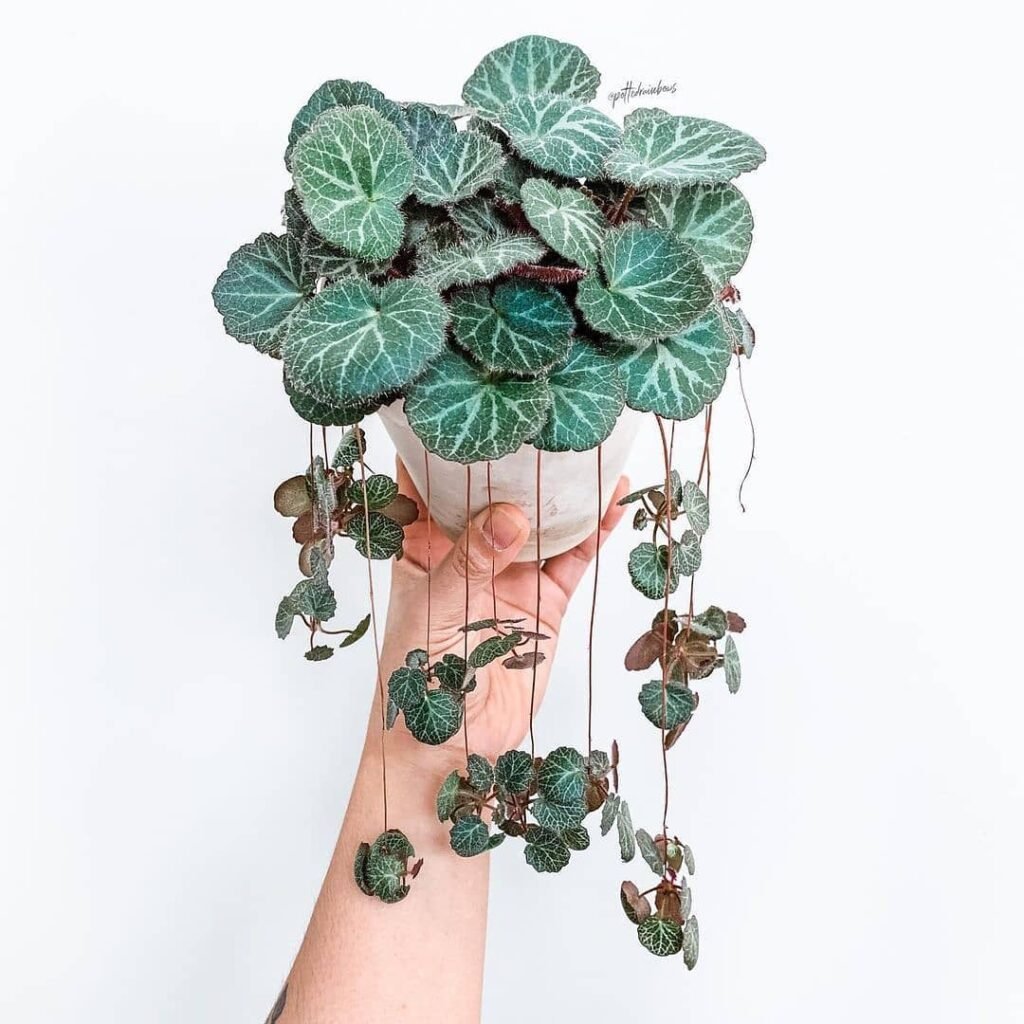

Genus Species
The botanical classification of Strawberry Begonia reveals its scientific name, Saxifraga stolonifera, providing valuable insights into its lineage within the plant kingdom.
Genus and Species:
- Genus: Saxifraga
- Species: Stolonifera
- Family: Saxifragaceae
Strawberry Begonia is part of the Saxifraga genus, which includes over 400 species, with Stolonifera being one of them. This classification helps us understand the plant’s close relatives and shared characteristics.
Fascinating Fact: The genus name, “Saxifraga,” is derived from Latin and means “stone-breaker” because some species in this genus are known to grow in rocky crevices.
Understanding the plant’s botanical classification can be useful for gardeners and horticulturists when it comes to care and propagation, as it offers insights into the plant’s natural behavior and characteristics within the Saxifraga family.
Strawberry Begonia Appearance
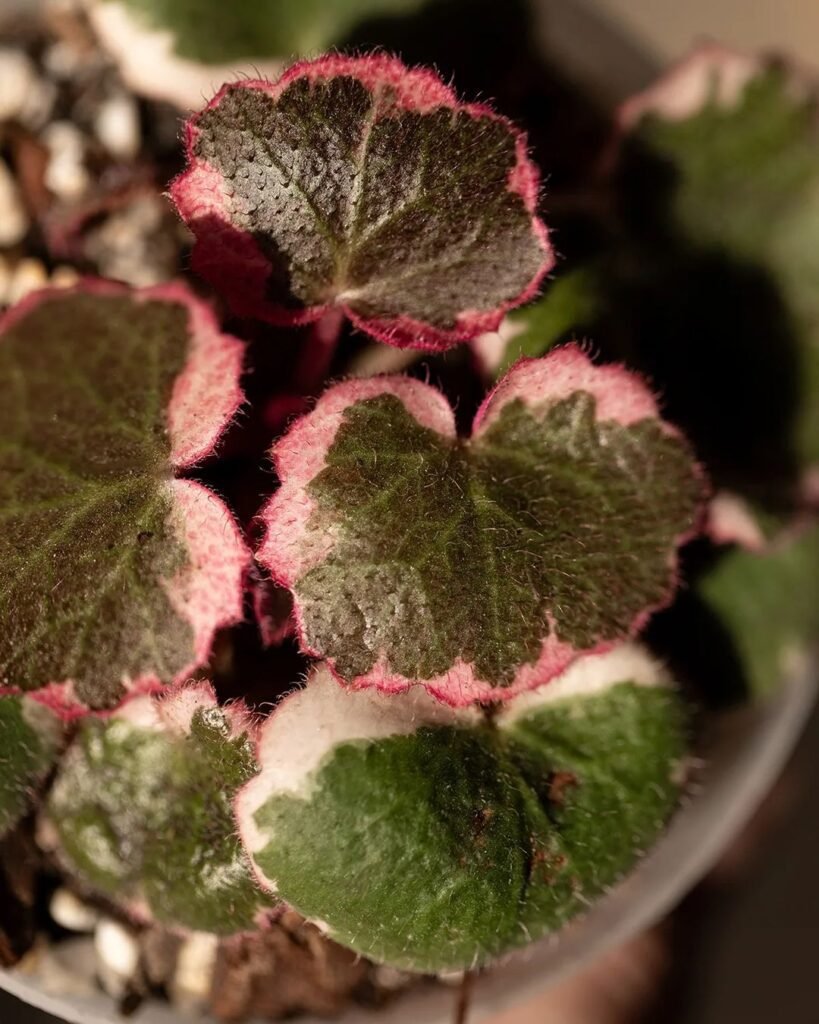
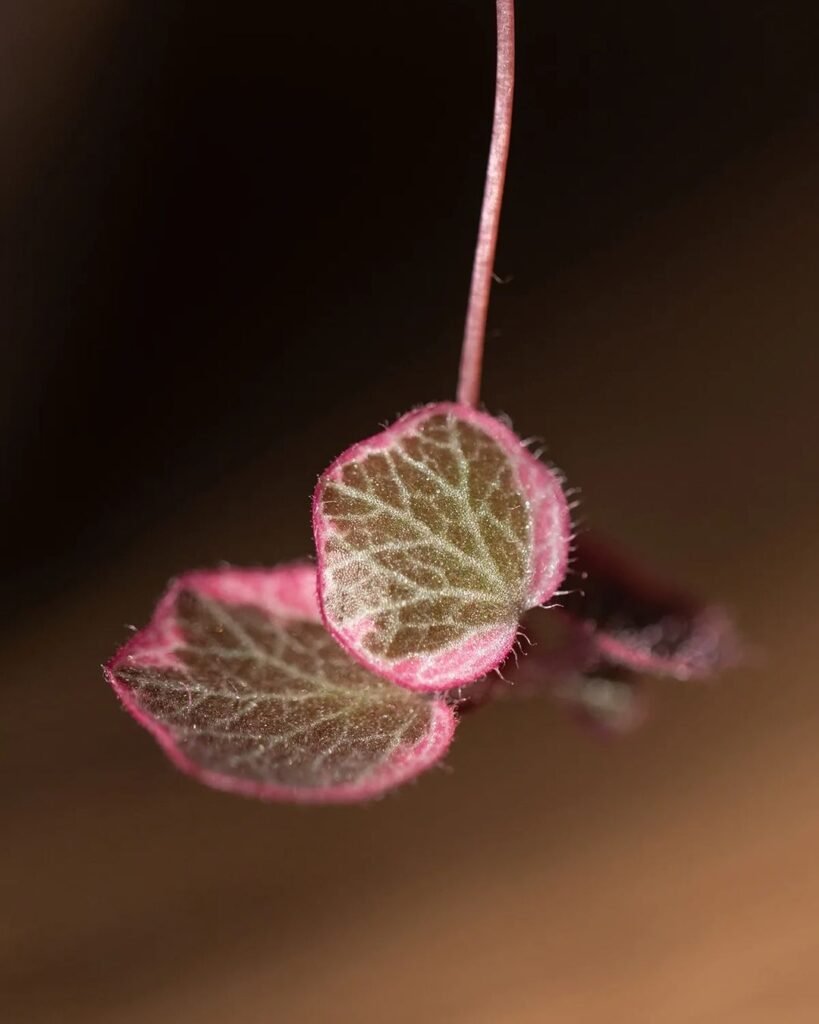
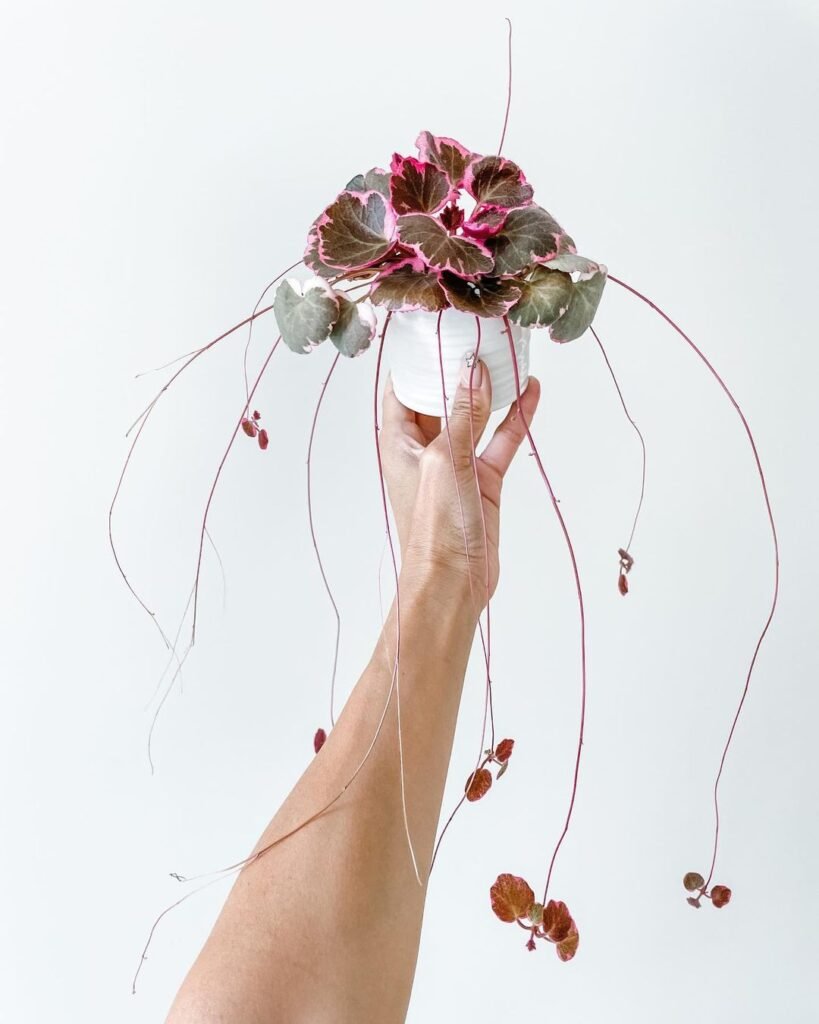
The captivating appearance of Strawberry Begonia is a major reason for its popularity among plant enthusiasts. This plant boasts distinct features that make it a standout addition to any indoor garden.
Foliage:
- Strawberry Begonia is known for its lush, round, and scalloped leaves. These leaves have a vibrant green color on top, while their undersides exhibit an enchanting shade of red.
- The leaves are often compared to begonia leaves due to their similar shape, which can lead to some confusion regarding its classification.
Flowers:
- While it’s primarily grown for its foliage, Strawberry Begonia can produce dainty, star-shaped, white or pink flowers on slender stems. These delicate blooms add a touch of elegance to the plant’s overall appearance.
Growth Habit:
- This plant has a trailing growth habit, making it an excellent choice for hanging baskets or as ground cover in gardens.
- It sends out runners, or stolons, which root in the soil, enabling the plant to spread and create a lush, carpet-like effect.
Strawberry Begonia’s charming appearance, from its unique leaves to its delicate flowers and trailing growth, makes it a visually striking plant that can be enjoyed both indoors and outdoors.
Care Tip: To encourage a bushier growth habit, pinch back the ends of the runners or stolons. This helps the plant become denser and more lush over time.
Not the plant for you? Check out my full list of 78 Types of Begonia!
How to Grow Strawberry Begonia
Growing Strawberry Begonia is a rewarding experience, as it’s a relatively easy plant to cultivate. Whether you’re a novice or an experienced gardener, these guidelines will help you successfully nurture your Strawberry Begonia.
Planting and Potting:
- Choose a well-draining pot or hanging basket, as proper drainage is crucial for this plant.
- Use a peat-based potting mix to provide the necessary aeration and moisture retention.
- Place the plant’s stolons in the soil, ensuring they make contact with the substrate to promote root development.
- Maintain a planting depth where the stolons are just below the soil surface.
Light Requirements:
- Strawberry Begonia thrives in bright, indirect light, making it an ideal candidate for indoor spaces with filtered sunlight.
- Avoid direct sunlight, as it can scorch the delicate foliage.
- If growing indoors, place it near an east or north-facing window for optimal light conditions.
Watering Guidelines:
- Keep the soil consistently moist, but avoid overwatering, which can lead to root rot.
- Water when the top inch of soil feels dry to the touch.
- Use room-temperature water to avoid shocking the plant.
Humidity Preferences:
- Strawberry Begonia appreciates higher humidity levels, which can be challenging to maintain in some indoor environments.
- To increase humidity, mist the plant regularly or place a tray of water with pebbles near it to create a microclimate.
Temperature Considerations:
- Maintain moderate room temperatures between 65-75°F (18-24°C).
- Protect the plant from drafts, as it’s sensitive to temperature fluctuations.
Care Tips:
- Pruning: Regularly pinch back the runners to encourage bushier growth and prevent legginess.
- Repotting: Repot your Strawberry Begonia every 2-3 years in the spring to refresh the soil and allow for continued growth.
Strawberry Begonia Quick Care Overview

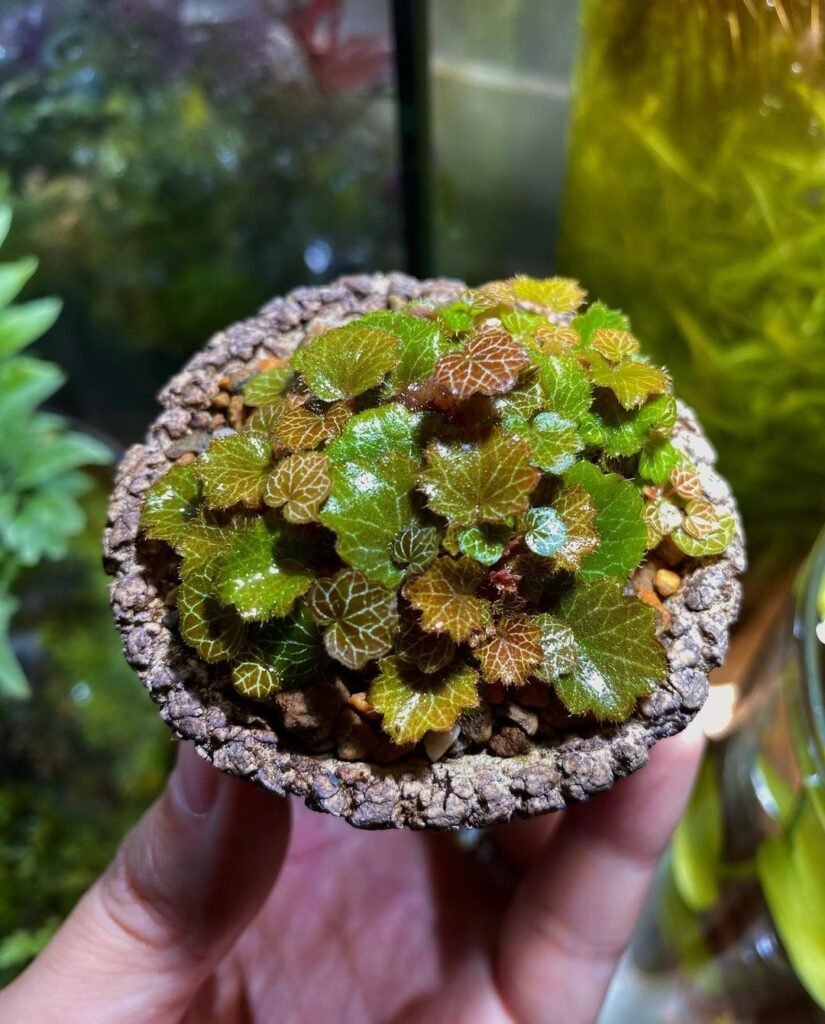

Strawberry Begonia, with its striking appearance, is a wonderful addition to your plant collection. Here’s a quick overview of its care needs to keep it thriving.
Light: Provide bright, indirect light to maintain the plant’s vibrant foliage color. If the leaves become pale, it’s a sign that the plant may need more light.
Watering: Keep the soil consistently moist but not waterlogged. Water when the top inch of soil feels dry to the touch.
Temperature: Maintain moderate room temperatures between 65-75°F (18-24°C). Avoid extremes of heat or cold.
Humidity: Strawberry Begonia enjoys higher humidity levels. Mist the plant or use a humidity tray to enhance the moisture in the air.
Soil: Use a well-draining potting mix with good aeration to prevent waterlogged roots.
Fertilization: Feed every 4-6 weeks during the growing season with a balanced liquid fertilizer.
Pruning: Regularly trim back the stolons to encourage bushier growth and a more compact appearance.
Care Tip: To keep your Strawberry Begonia looking its best, pinch back any leggy growth or spent blooms. This helps maintain a tidy and attractive appearance.
Strawberry Begonia Light Requirements
Understanding the specific light requirements for your Strawberry Begonia is crucial for its overall health and appearance. This plant has particular needs when it comes to light exposure.
Ideal Light Conditions:
- Strawberry Begonia thrives in bright, indirect light. In its natural habitat, it often grows beneath taller plants, receiving filtered sunlight.
- Place it near an east or north-facing window to provide the right amount of light without direct sun exposure.
Adjusting Light Levels:
- If you notice that the plant’s leaves are fading or becoming pale, it may be an indicator of insufficient light.
- Conversely, if the leaves start to brown or develop sunburn spots, the plant is receiving too much direct sunlight.
Artificial Lighting:
- If natural light is limited in your indoor space, you can use artificial lighting, such as fluorescent or LED grow lights, to supplement the required light intensity.
Care Tips:
- Rotate the plant periodically to ensure all sides receive equal light exposure.
- Keep an eye on the plant’s response to its current light conditions and adjust as needed to maintain its vibrant appearance.
Now, let’s include a table summarizing the light requirements:
| Light Conditions | Ideal | Acceptable | Avoid |
|---|---|---|---|
| Direct Sunlight | No | No | Yes |
| Indirect Light | Yes | Yes | No |
| Low Light | No | Yes | No |
Strawberry Begonia Soil Preferences
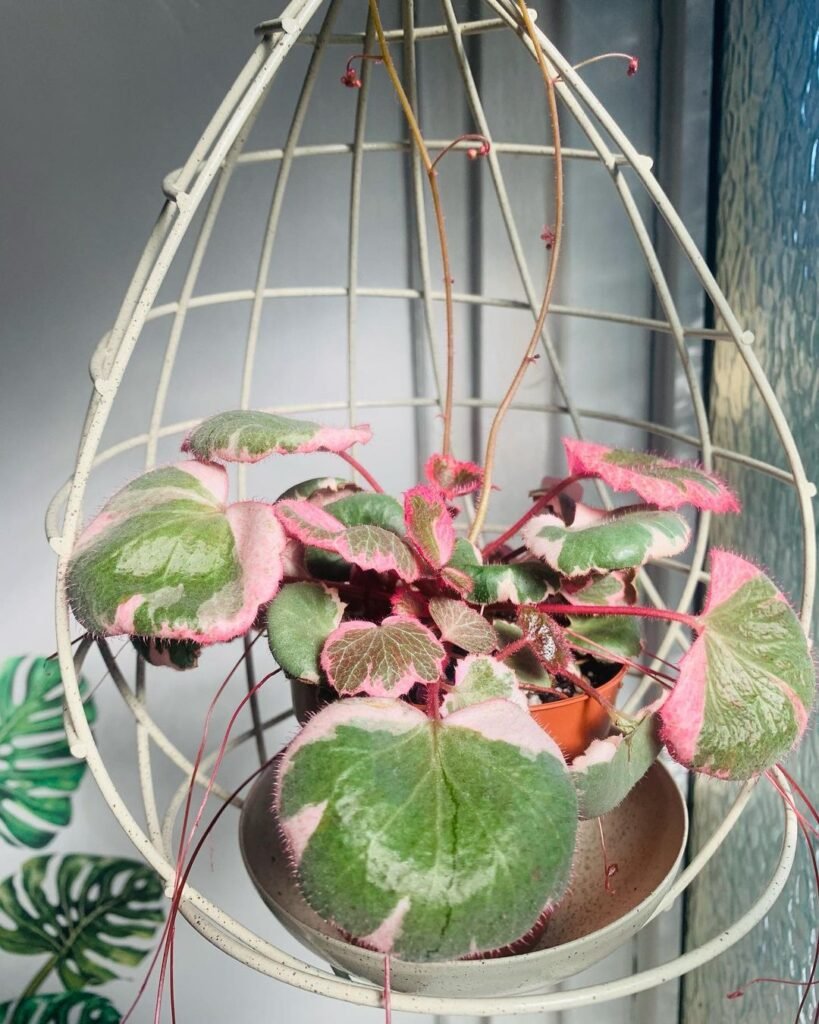

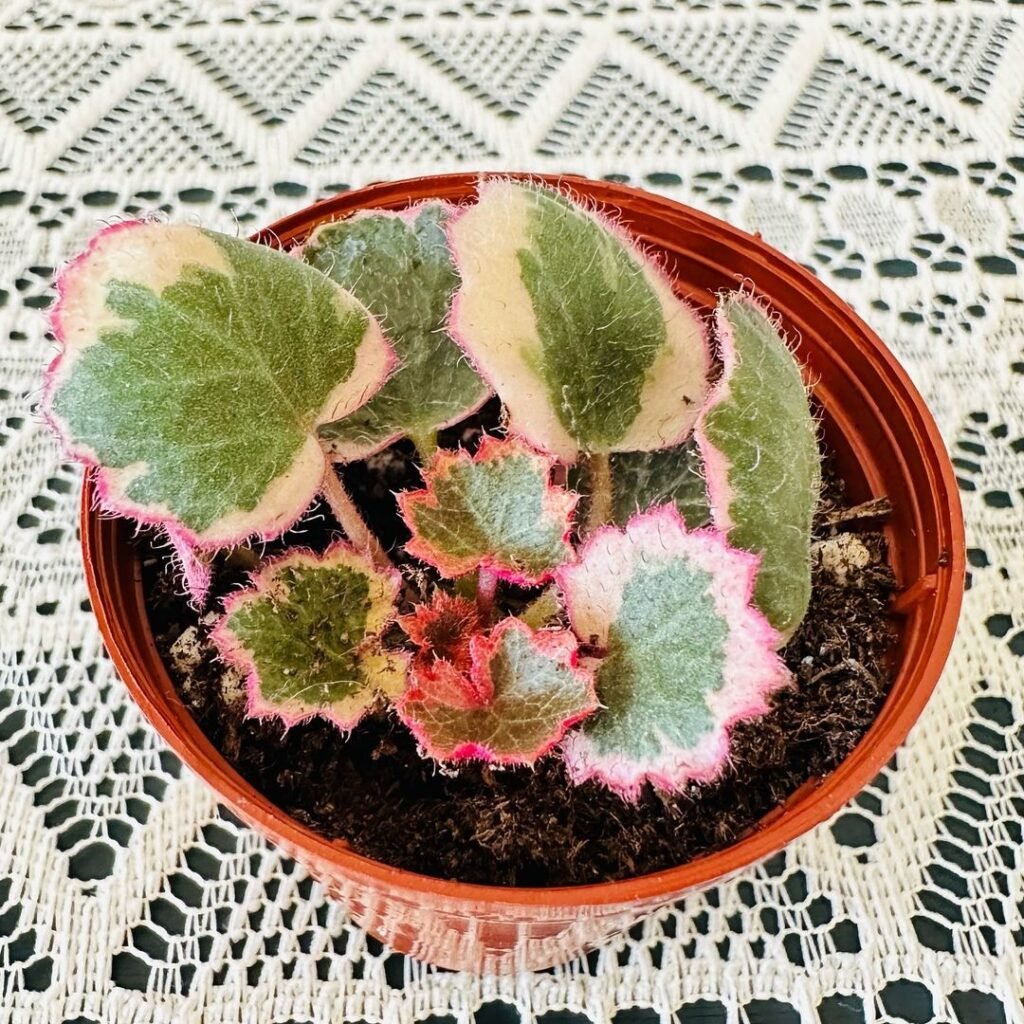
Understanding the right soil type and quality is essential for the well-being of your Strawberry Begonia. These preferences ensure optimal growth and vibrant foliage.
Soil Type:
- Opt for a well-draining potting mix to prevent waterlogged roots. A mixture with peat or coco coir works well.
- Sandy loam or a combination of potting soil and perlite helps maintain good aeration around the roots.
- Ensure the soil has a slightly acidic to neutral pH level, typically ranging from 6.0 to 7.0.
Aeration and Structure:
- Good soil structure is essential for root development and oxygen exchange.
- Adequate aeration in the soil allows roots to breathe and prevents suffocation.
Amendments:
- If you can’t find a suitable potting mix, you can add perlite or orchid bark to your standard potting mix to improve drainage.
- Alternatively, mix in some organic matter, like peat moss, to increase moisture retention in drier environments.
Repotting:
- Repot your Strawberry Begonia every 2-3 years or when the plant outgrows its current container.
- Use this opportunity to refresh the soil and ensure the plant has enough space for growth.
Care Tips:
- Water Management: Proper soil ensures you can maintain consistent moisture without overwatering.
- Fertilize Strategically: Good soil structure complements your fertilization routine, helping the plant absorb nutrients efficiently.
Watering Strawberry Begonia
Watering Strawberry Begonia correctly is crucial for its health. Overwatering or underwatering can lead to various issues, so it’s essential to get it right.
Watering Frequency:
- Keep the soil consistently moist, but not soggy. Water when the top inch of soil feels dry to the touch.
- The frequency may vary depending on factors like temperature, humidity, and the specific potting mix used.
Watering Method:
- Water the soil directly and avoid getting water on the leaves to prevent rot and fungal diseases.
- Use room-temperature water to avoid shocking the plant.
Signs of Underwatering:
- If your Strawberry Begonia starts to wilt, with leaves drooping and browning at the edges, it’s a sign of dehydration.
Signs of Overwatering:
- Yellowing leaves and root rot may indicate excessive moisture. In this case, reduce watering and improve drainage.
Care Tips:
- Humidity Tray: Placing a tray of water with pebbles near the plant helps increase local humidity and reduce the need for frequent watering.
- Consistent Routine: Establish a regular watering schedule, keeping an eye on the soil’s moisture level to ensure you neither over- nor underwater the plant.
Strawberry Begonia Humidity Requirements
Maintaining the right humidity levels is key to a thriving Strawberry Begonia. This plant naturally prefers higher humidity, which can be a challenge in some indoor environments.
Ideal Humidity:
- Strawberry Begonia thrives in a humidity range of 50-60%.
- Higher humidity levels can be achieved through various methods.
Increasing Humidity:
- Use a humidity tray: Place a shallow tray filled with water and pebbles near the plant. As the water evaporates, it raises the humidity around the plant.
- Group your plants: Positioning your Strawberry Begonia near other plants can create a microclimate with increased humidity.
Monitoring Humidity:
- Use a hygrometer to measure the humidity level in your plant’s environment.
- If the humidity falls below the ideal range, consider misting the plant regularly with room-temperature water.
Care Tip:
- Misting: Gently misting your Strawberry Begonia with water can help maintain the necessary humidity level. However, avoid over-wetting the leaves, which can lead to fungal issues.
Strawberry Begonia Temperature Requirements
Temperature plays a crucial role in the overall well-being of your Strawberry Begonia. Understanding its specific temperature preferences is vital for keeping this charming plant healthy.
Ideal Temperature Range:
- Strawberry Begonia thrives in moderate room temperatures, typically ranging between 65-75°F (18-24°C).
- Avoid exposing the plant to extreme temperature fluctuations, as it’s sensitive to sudden changes in its environment.
Winter Temperature Considerations:
- During the winter, try to maintain a minimum temperature of 50°F (10°C) to prevent cold damage.
- Protect the plant from drafts, especially near windows or doors that may let in cold air.
Summer Temperature Considerations:
- Avoid placing your Strawberry Begonia in direct sunlight during hot summer days, as it can lead to overheating and sunburn.
- If the indoor temperature rises significantly during the summer, consider providing some shade or relocating the plant to a cooler spot.
Care Tip: If you experience temperature extremes in your area, consider moving your Strawberry Begonia to a more controlled indoor environment, like a greenhouse, during extreme weather conditions.
Fertilizing Strawberry Begonia
Proper fertilization is essential to keep your Strawberry Begonia healthy and vibrant. Here’s a comprehensive guide on how to provide the right nutrients to your plant.
Fertilizer Type:
- Use a balanced, water-soluble fertilizer with equal proportions of nitrogen, phosphorus, and potassium (N-P-K). For example, a 10-10-10 or 20-20-20 formula works well.
Fertilization Schedule:
- During the growing season, which typically spans from spring to early autumn, fertilize your Strawberry Begonia every 4-6 weeks.
- Reduce or eliminate fertilization during the winter months when the plant is in a semi-dormant state.
Application Method:
- Dilute the fertilizer to half or quarter strength as recommended on the product label.
- Apply the diluted solution to the soil, avoiding direct contact with the leaves, which can cause burn marks.
Effects of Over-Fertilization:
- Be cautious not to over-fertilize, as it can lead to salt build-up in the soil and nutrient imbalances.
- Symptoms of over-fertilization include brown leaf tips, wilting, and stunted growth.
Care Tips:
- Flush the Soil: Every 2-3 months, water your Strawberry Begonia with plain water to flush out excess salts and maintain a healthy nutrient balance.
- Observation: Keep an eye on your plant’s response to fertilization. Adjust the frequency or strength if you notice any adverse effects.
Strawberry Begonia Pruning and Shaping
Pruning and shaping your Strawberry Begonia is a valuable practice to maintain its appearance and encourage healthy growth. Here’s how to do it effectively.
Pruning Leggy Growth:
- Strawberry Begonias can become leggy, with long, straggling runners. To promote a bushier appearance, pinch back the ends of the stolons.
Trimming Spent Blooms:
- Remove spent or fading flowers to encourage the plant to redirect its energy into producing new growth and blooms.
Thinning Crowded Growth:
- As your Strawberry Begonia matures, it may become crowded. Gently thin out overcrowded areas to improve airflow and prevent disease.
Training for Shape:
- If you have a specific shape in mind, guide the stolons to grow in the desired direction using plant ties or stakes.
Maintenance Pruning:
- Regularly inspect your plant for any dead or yellowing leaves and remove them to maintain a tidy appearance.
Care Tip: When pruning or shaping your Strawberry Begonia, always use clean, sharp scissors or pruning shears to avoid damaging the plant. Additionally, it’s best to do any shaping or pruning during the active growing season for optimal results.
Now, let’s include a table summarizing the key points of fertilization:
| Fertilization Aspect | Recommendation |
|---|---|
| Fertilizer Type | Balanced (e.g., 10-10-10) |
| Fertilization Schedule | Every 4-6 weeks (spring to early autumn) |
| Dilution Strength | Half or quarter strength, per product label |
| Winter Fertilization | Reduce or eliminate during the winter |
| Effects of Over-Fertilization | Brown leaf tips, wilting, stunted growth |
| Maintenance Practice | Flush the soil with plain water every 2-3 months |
Understanding the temperature requirements, proper fertilization, and effective pruning and shaping techniques will contribute to the overall well-being of your Strawberry Begonia.
Strawberry Begonia Propagation Tips
Propagation allows you to expand your collection of Strawberry Begonia plants or share them with fellow gardening enthusiasts. Here are some effective methods for propagating this delightful plant.
1. Division:
- Propagation by division is one of the most straightforward methods. It’s best done during the spring or early summer when the plant is actively growing.
- Gently separate the offshoots or baby plants that develop at the end of the stolons. These can be easily removed and potted in their containers.
2. Stem Cuttings:
- Another method is taking stem cuttings from your Strawberry Begonia. Use sharp, clean scissors or pruning shears.
- Cut a healthy stem, ensuring it has a node (a small bump on the stem where leaves, roots, or flowers develop).
- Place the cutting in a small pot with a well-draining potting mix and keep it consistently moist.
3. Leaf Cuttings:
- Leaf cuttings are an option for propagating Strawberry Begonia. Select a healthy leaf and cut it into smaller sections, each with a vein running through it.
- Insert the cut end of the leaf section into the soil, ensuring the vein is beneath the surface. Keep the soil consistently moist until new growth appears.
4. Offsetting:
- As Strawberry Begonia grows, it naturally produces offsets, or new plants, around the base.
- Carefully detach these offsets from the main plant and pot them in individual containers.
Propagation Tips:
- Timing: Spring and early summer are the best times for propagation when the plant is actively growing.
- Use a rooting hormone: To boost the success rate, consider using a rooting hormone when taking stem or leaf cuttings.
- Monitor humidity: Maintaining higher humidity around propagated cuttings can enhance their chances of rooting successfully.
Repotting Strawberry Begonia Tips
Repotting is an essential aspect of caring for your Strawberry Begonia as it ensures the plant continues to thrive and has enough space for growth.
Signs It’s Time to Repot:
- If you notice the plant becoming root-bound, with roots circling the pot and emerging from the drainage holes, it’s time for a larger container.
- Repot every 2-3 years to refresh the soil and provide more room for growth.
Repotting Process:
- Select a new pot that’s 1-2 inches larger in diameter than the current one.
- Gently remove the plant from its old container, being careful not to damage the roots.
- Place fresh potting mix in the new container and position the plant at the same depth as in the old pot.
Post-Repotting Care:
- After repotting, water the plant lightly and avoid fertilizing for a few weeks to allow the plant to acclimate to its new environment.
- Keep the plant in moderate light until it shows signs of new growth, indicating that it has settled into its new pot.
Care Tip: When repotting, check for any signs of pests or diseases in the root system, and treat accordingly before transferring the plant to a new container.
Strawberry Begonia Seasonal Care
Adapting your care routine to the changing seasons is essential for the health and happiness of your Strawberry Begonia. Here’s how to address the plant’s needs during different times of the year.
Spring and Summer:
- During the active growing season, provide regular fertilization every 4-6 weeks with a balanced fertilizer.
- Maintain consistent humidity levels, as these months are ideal for vigorous growth.
Fall:
- As the days become shorter and light intensity decreases, you may reduce fertilization to every 8-10 weeks.
- Be mindful of cooler temperatures approaching and ensure your plant stays within the temperature range of 65-75°F (18-24°C).
Winter:
- Reduce both watering and fertilization during the winter, as Strawberry Begonia enters a semi-dormant phase.
- Keep the plant in a warmer environment with a minimum temperature of 50°F (10°C).
Care Tip: Pay close attention to your Strawberry Begonia’s behavior during each season, adjusting its care routine as needed. This adaptable approach ensures the plant’s well-being year-round.
Now, let’s include a table summarizing the key tips for propagation:
| Propagation Method | Best Time | Key Steps | Additional Tips |
|---|---|---|---|
| Division | Spring to early summer | Separate offshoots or baby plants | Ensure the separated plants have roots. |
| Stem Cuttings | Spring to early summer | Cut stems with nodes, plant in soil | Using a rooting hormone can boost success. |
| Leaf Cuttings | Spring to early summer | Cut leaf into sections with veins | Maintain high humidity around cuttings. |
| Offsetting | As they appear | Carefully detach offsets and repot | Ensure offsets have roots before repotting. |
Effectively propagating your Strawberry Begonia and providing seasonal care will ensure a healthy, thriving plant throughout the year.
Strawberry Begonia Companion Plants
Selecting the right companion plants to grow alongside your Strawberry Begonia can enhance the aesthetics and health of your indoor garden. Here are some suitable companion plants and the benefits they bring:
1. Ferns:
- Ferns, such as Maidenhair Fern or Boston Fern, complement the Strawberry Begonia’s humidity preferences.
- They create a lush, green backdrop that accentuates the vibrant foliage of the Strawberry Begonia.
2. Spider Plant (Chlorophytum comosum):
- Spider plants are known for their air-purifying qualities and adaptability.
- They can thrive in similar light and humidity conditions, making them excellent companions.
3. Pothos (Epipremnum aureum):
- Pothos is another low-maintenance plant with similar light requirements.
- Its trailing vines make an appealing contrast to the Strawberry Begonia’s upright growth.
4. Peace Lily (Spathiphyllum):
- Peace lilies are great air purifiers and thrive in low to moderate light.
- Their elegant white blooms complement the Strawberry Begonia’s petite flowers.
Companion Planting Tips:
- Monitor Compatibility: Ensure that companion plants share similar light, humidity, and watering needs with your Strawberry Begonia.
- Pest Control: Some companion plants can help deter common indoor pests, such as spider mites.
Care Tip: Regularly inspect your companion plants for signs of pests or disease, as these issues can quickly spread to your Strawberry Begonia if left untreated.
Pest Control Tips for Strawberry Begonia
While Strawberry Begonias are generally hardy, they can still fall victim to common indoor plant pests. Here are some effective pest control methods to keep your plant healthy and thriving.
1. Spider Mites:
- Spider mites are tiny arachnids that can infest Strawberry Begonia. To control them:
- Isolate the affected plant to prevent the mites from spreading.
- Use a gentle, steady stream of water to wash off the mites.
- Apply neem oil or insecticidal soap to deter and eliminate them.
2. Mealybugs:
- Mealybugs are soft-bodied insects that feed on plant sap. To combat them:
- Isolate the infested plant.
- Use a cotton swab dipped in rubbing alcohol to remove mealybugs manually.
- Apply neem oil or insecticidal soap to control their population.
3. Fungus Gnats:
- Fungus gnats are common indoor plant pests that lay eggs in moist soil. To prevent them:
- Allow the top inch of soil to dry out between waterings.
- Use yellow sticky traps to capture adult fungus gnats.
- Consider adding a layer of sand or gravel to the soil surface to deter egg-laying.
4. Scale Insects:
- Scales are small, oval insects that attach to stems and leaves. To address a scale infestation:
- Gently scrub scales off the plant with a soft brush or toothbrush.
- Apply neem oil or insecticidal soap to control the pests.
Care Tip: Regularly inspect your Strawberry Begonia and its companion plants for signs of pests. Early detection and intervention can prevent infestations from spreading and causing damage.
Strawberry Begonia Common Problems
Understanding and addressing common issues that Strawberry Begonias may encounter is essential for keeping your plant healthy and vibrant. Here are some typical problems and how to tackle them:
1. Leggy Growth:
- Leggy growth can occur if the plant doesn’t receive enough light.
- To address this, move your Strawberry Begonia to a brighter location, prune leggy growth, and consider using artificial lighting.
2. Yellowing Leaves:
- Yellowing leaves can indicate overwatering, poor drainage, or root rot.
- Adjust your watering routine, ensure proper soil drainage, and trim affected leaves.
3. Brown Leaf Tips:
- Brown leaf tips can result from low humidity, over-fertilization, or salt build-up in the soil.
- Increase humidity levels, reduce fertilizer application, and flush the soil with plain water to correct these issues.
4. Wilting:
- Wilting may be a sign of underwatering or exposure to extreme temperatures.
- Adjust your watering schedule and protect your plant from drafts or temperature extremes.
Care Tip: Regularly inspect your Strawberry Begonia for signs of these common problems and address them promptly to prevent further issues and maintain a healthy plant.
Reviving a Sick or Wilting Strawberry Begonia
When your Strawberry Begonia appears sick or starts wilting, it’s essential to diagnose the issue and take corrective measures promptly. Here’s a comprehensive guide on reviving your plant:
1. Identify the Problem:
- Examine the plant for any visible signs of trouble, such as yellowing leaves, brown spots, or wilting.
- Check the soil’s moisture level and drainage to determine if overwatering or underwatering is the issue.
2. Correct Watering Issues:
- If the soil is waterlogged and roots are rotting, repot the plant in well-draining soil and trim away any damaged roots.
- If the plant is dehydrated, water it thoroughly and ensure you maintain a consistent watering schedule.
3. Inspect Light and Temperature:
- Ensure the plant is not exposed to direct sunlight, which can cause leaf burn and wilting.
- Check the temperature in its environment to avoid extreme cold or heat stress.
4. Increase Humidity:
- If the air is too dry, increase humidity by misting the plant or using a humidity tray with water and pebbles.
5. Fertilize Carefully:
- If you’ve been fertilizing frequently, reduce the frequency and strength of fertilization to prevent nutrient overload.
6. Prune Unhealthy Growth:
- Remove any dead or yellowing leaves, as these can stress the plant further.
Care Tip: Keep a close eye on your Strawberry Begonia after implementing corrective measures. Recovery may take time, so be patient and persistent in your care.
Love all types of Begonia? Make sure to catch up on my post on Growing Dragon Wing Begonia: Nurturing Nature’s Beauty. After you’ve finished reading that, why not also check out my article on Elatior Begonia Care Unveiled: Journey to Green Bliss.
FAQs
Here are some frequently asked questions about Strawberry Begonias:
Can Strawberry Begonias be grown outdoors?
Yes, Strawberry Begonias can be grown outdoors in regions with mild, temperate climates. They thrive in shaded or partially shaded areas with well-draining soil.
Can I use tap water to water my Strawberry Begonia?
Using tap water is acceptable as long as it’s not excessively hard or chlorinated. Let the water sit for a day to allow chlorine to dissipate, or use a water conditioner.
Are Strawberry Begonias toxic to pets?
Strawberry Begonias are non-toxic to cats and dogs, making them a safe choice for pet owners.
How do I prevent the plant from becoming leggy?
To prevent leggy growth, ensure your Strawberry Begonia receives enough indirect light. Regularly prune back leggy stems to encourage bushier growth.
Can I place Strawberry Begonia in a bathroom for higher humidity?
Yes, a bathroom can be a suitable location due to its higher humidity levels. Just ensure the plant receives adequate indirect light.
Conclusion
In conclusion, Strawberry Begonias, with their charming appearance and relatively low-maintenance requirements, are a delightful addition to any indoor garden. Understanding their specific needs, from light and temperature to watering and humidity, is key to their health and vibrancy. Additionally, knowing how to propagate, care for common problems, and select suitable companion plants can help you enjoy a thriving Strawberry Begonia.
As with any plant, attentive care and prompt action when issues arise are crucial for ensuring your Strawberry Begonia remains a beautiful and healthy addition to your home or garden. Happy gardening!

Writer/Green Thumb/Explorer – Rooted deep in the rich soils of Devon, I’ve cultivated a vast expertise in plant care, helping greenery thrive in homes across the UK. When I’m not crafting detailed plant care guides, I’m journeying through the lush landscapes of the West Country, unearthing nature’s secrets and sharing them with fellow plant enthusiasts. Every leaf has a story, and I’m here to tell it.





